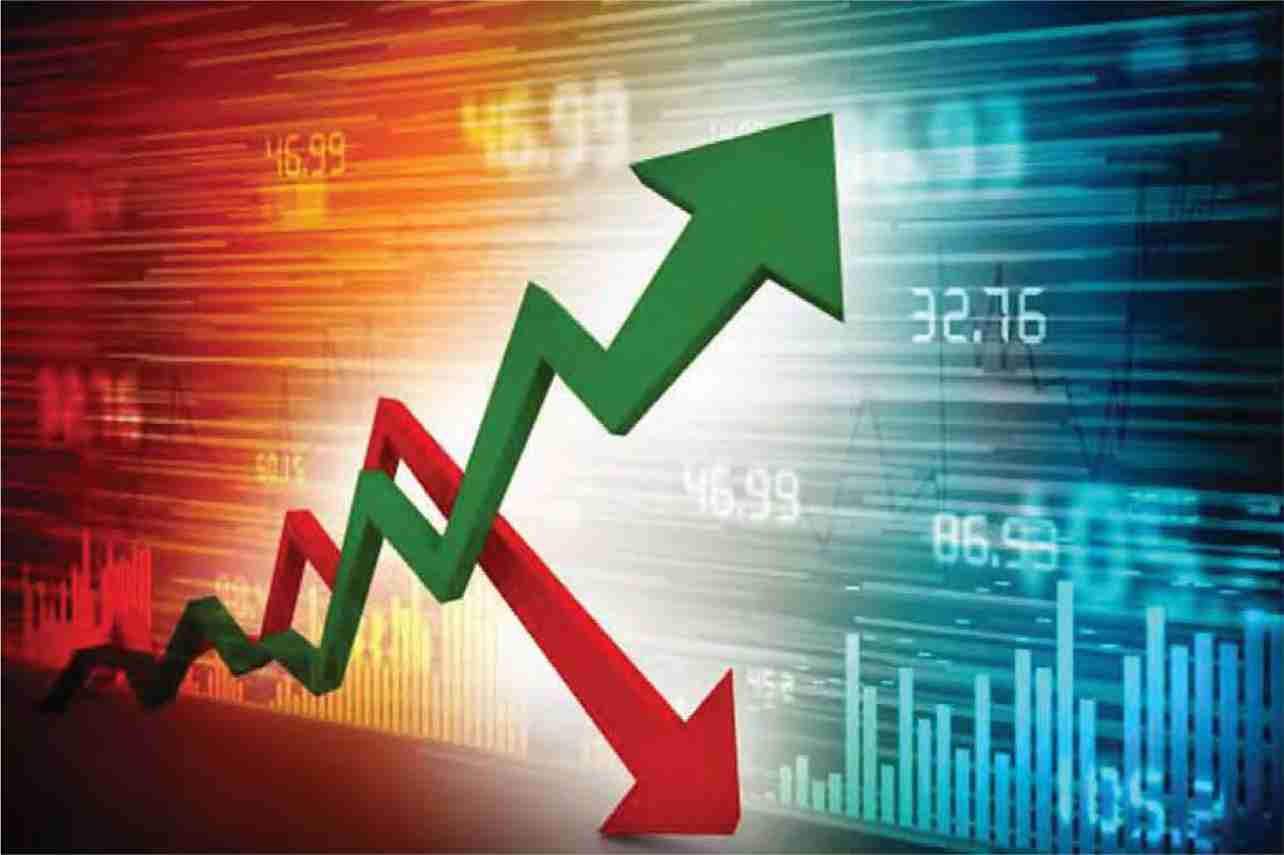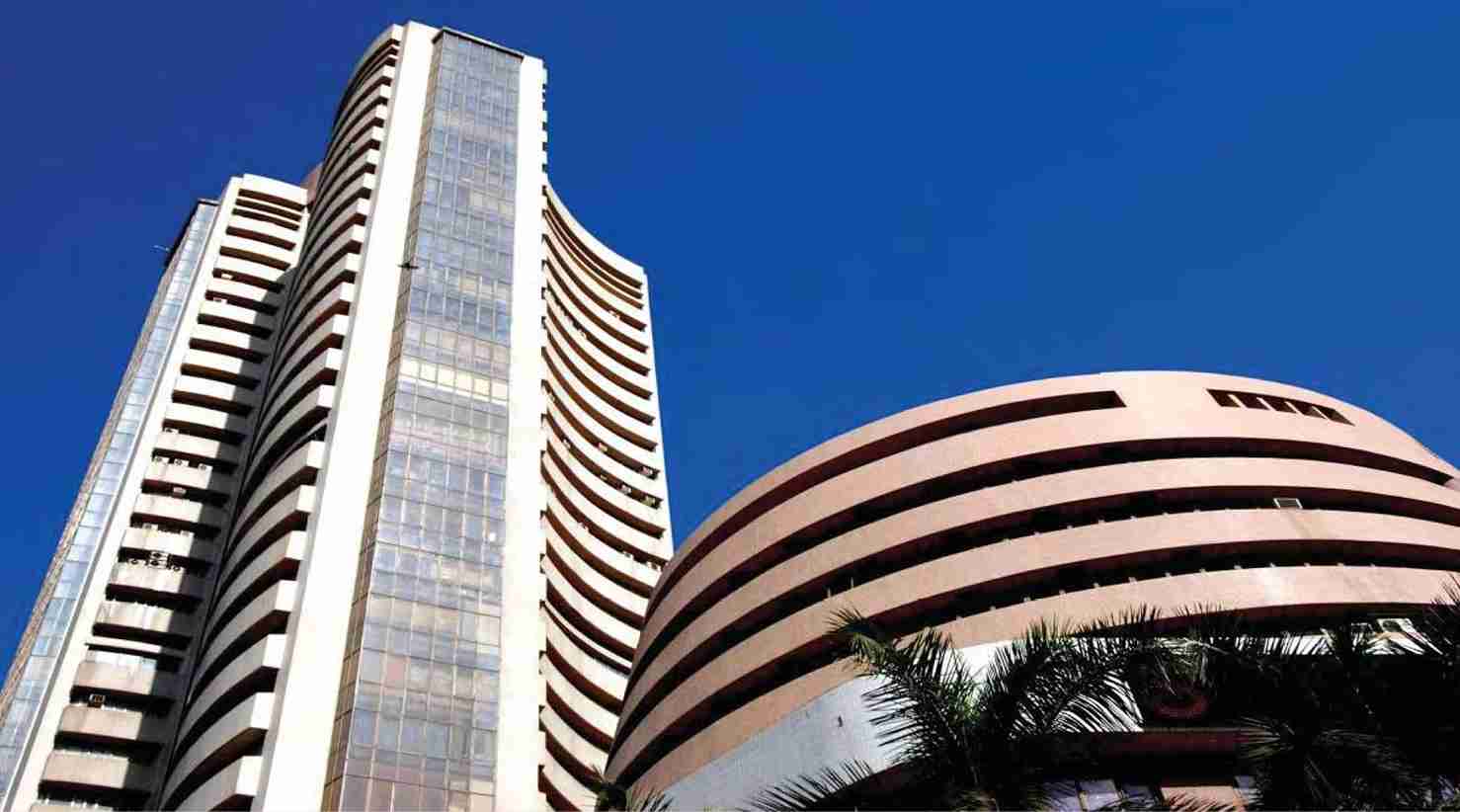Want to Subscribe?
Read Corporate India and add to your Business Intelligence

![]() Unlock Unlimited Access
Unlock Unlimited Access

Published: May 15, 2025
Updated: May 15, 2025
The cessation of Indo-Pak hostilities, coupled with US President Donald Trump hitting the ‘pause’ button on his draconian reciprocal tar iffs, has infused new life into a jittery Indian stock market which was south-bound less than a week earlier.
Post India’s Operation ‘Sindoor’ late on May 6 in retaliation for the April 22 terrorist massacre of 26 tourists in Kashmir’s Pahalgam district, both the BSE Sensex and the Nifty50 declined considerably. But even as market watchers were doubting the resilience of the market, foreign institutional investors (FIIs) contrarily remained net buyers, investing over Rs 3,000 crore on May 8. An early monsoon forecast and a fall in crude oil prices have further further propelled the market.
THE current consensus among market watch ers is that the Indian economy will remain the fastest growing economy in the world with a 6 per cent-plus annual GDP growth, which is good news for the Indian stock market. But global geopolitical and economic factors could still act as a spoiler. It is no wonder then that the eco system of investors, industry and analysts is keeping its fingers over a question that refuses to go away: where does the Indian stock market go from here?
the missiles and drones ceased their deadly incursions across the India-Pakistan border, the four-day-long hostilities came to an abrupt end as US President Donald Trump sought to take the credit for brokering peace between the two South Asian neighbours – a claim that was stoutly denied by India which attributed the ceasefire to a desperate call from a top Pakistani military authority to his Indian counterpart. Be that as it may, the cessation of hostilities between the two nuclear-armed neighbours on Saturday, May 10 provided a huge tailwind to the Indian stock market, which flew sky-high on the following Monday before falling back to earth the very next day. Inevitably, the current buzz in trade, industry and investment circles is: Where does the stock market go from here?
Almost immediately after India launched Operation ‘Sindoor’ in the late-night hours of May 6 to avenge the April 22 massacre of 26 tourists in Kashmir’s Pahalgam district by suspected members of a Pakistan-based terror outfit, the stock market began its southward journey. During the four-day hostilities, the BSE benchmark index, the Sensex, lost over 1,342 points as it tumbled from 80796.84 to 79454.47, while the Nifty50 declined by 453 points from 24461.15 to 24008.00. The steep est plunge was recorded on Friday, May 9, when the Sensex nosedived 880 points and the Nifty50 over 266 points, as Operation ‘Sindoor’ battered Pakistan’s mili tary capabilities, in the process stoking fears of the conflict turning into a full fledged war. Analysts noted that while a short-term conflict had been factored in, the market was not prepared for the prospect of long-drawn hostilities. Contrarily, as it was widely believed that India would have the upper hand in the hostilities, and despite the geopolitical jitters, foreign institutional investors (FIIs) remained net buyers, investing over Rs 3,000 crore on third day of the war on Thursday, May 8.
Notes Prasanna Pathak, market expert and managing partner of The Wealth Company, “When geopolitical tensions rise, financial markets tend to react nega tively due to increased uncertainties, risk aversion and the potential for economic disruptions.”
Little wonder that during the four-day con flict, heavyweights like Reliance Industries, ICICI Bank, HDFC Bank, Bajaj Finance and Adani Ports dragged the market down under widespread selling.

But post US Presi dent Donald’s Saturday, May 10, announcement of a ‘US-mediated’ ceasefire between India and Pakistan, and a tamping down of US China reciprocal tariffs on Monday, May 12, the stock market turned ju bilant and experienced a significant surge in both the Sensex and the Nifty50. Short sellers, who had sold heavily during the four-day conflict, rushed to cover their positions and stock prices rose to sky high levels with both benchmark indices shooting up over 3.5 per cent — their biggest single-day gain since February 2021. As a result, Dalal Street saw its wealth shooting up by Rs 16.15 lakh crore.
Maintains a seasoned market observer, “Two unex pected and unbelievably positive developments led to the buoyancy in the market. First, US President Trump claimed that an understanding had been reached between India and Pakistan to cease military operations and, secondly, the US and China agreed to bring down their reciprocal tariffs from the earlier sky-high levels, signifying a major de-escalation of the unprecedented trade war between the world’s two biggest economies which had sent shockwaves across the globe.”
However, the market cheer lasted just a day as bull operators rushed to book profits. With stock prices declin ing on Tuesday, May 13, the market lost about half the gains of the previous day. After moving sideways on May 14, the market again turned buoyant on May 15 when a rebound caused the market to settle with impressive gains. The S&P BSE Sensex shot up to 82530.74, reflecting a spurt of 1200 points, while the NSE Nifty crossed the 25000 mark, set tling at 25062. Moreover, all sectoral indices ended the day in positive territory. Interestingly, foreign institutional inves tors (FIIs) bought equities worth Rs 932 crore. The market capitalisation of BSE-listed companies surged by Rs 5 lakh crore to Rs 439.94 lakh crore, while the market cap of NSE listed shares rose Rs 5.31 lakh crore to Rs 438.01 lakh crore.
The question now doing the rounds in trade, industry and investment circles is: Where do the markets go from here? Needless to say, the tariffs entente between the US and China has enlivened global markets, and the abrupt end of the India-Pakistan hostilities has boosted India’s stock market in particular — and both developments may con tinue to support positive market sentiment.
Asian markets traded higher on Monday, April 10, and Tuesday, following a sharp overnight rally on Wall Street after the US-China trade deal. On Tuesday, Japan’s Nikkei 225 gained 2.17 per cent while the Topix index rose 1.77 per cent, South Korea’s Kospi index added 0.13 per cent and the Kosdaq rallied 1.01 per cent. Hong Kong’s Hang Seng index future indices contrarily turned weaker. The US market jumped overnight with the S&P 500 marking its highest level since early March, and Nasdaq and Dow Jones posting their biggest single-day percentage gain since April 19.
As far as the Indian stock market was concerned, it wit nessed a stellar rally on Monday, April 12, after the con secutive announcements of an Indo-Pak ceasefire and a US China trade deal lifted investor sentiment. What is more, positive news from elsewhere also aided the bullish sentiment. The IMD’s forecast of an early mon soon, short covering in the derivatives segment, and a fall in crude oil prices further propelled the market upwards. With this, some experts contend that the positive momentum in the Indian market is likely to continue.
While the Indo-Pak ceasefire and the US-China tariff 'truce' for 90 days have triggered bullish market sentiments, bear operators have rushed to cover their short sales. While on the first day after this market-friendly news stock prices surged on account of nervous short covering, the next day witnessed heavy profit-taking.
It is a no-brainer that the Indo-Pak ceasefire has come as a big relief to the market, as extension or escalation of the conflict would have seriously impacted the economy and thereby the market. With the risk of such a detrimental out come having been averted, foreign institutional investors (FIIs) have not lost any time in returning to India's market. For the time being, FIIs will be the prime movers of the market. In fact, if the Indian market has shown resilience even during the military conflict between the two neighbouring countries, the credit should go to FIIs who resorted to sustained buying.
Interestingly, these FIIs were aggressive sellers in De cember 2024-January 2025. Following the election of Donald Trump as US President, the sharp rise in the dollar index triggered a momentum trade in US equity and bonds, which in turn led to massive selling in other markets like India. Little wonder that in January 2025, there was an FII selling avalanche to the tune of a massive Rs 78,027 crore. But since then, the dollar index tended to decline, leading to a downward drift in FII selling in the Indian market.
After April 2, 2025, when President Trump announced reciprocal tariffs for a host of countries, including India, the alarm bells triggered a massive selling wave. But once again, the announcement of a ceasefire and the US-China entente on reciprocal tariffs for 90 days put an end to the widespread tension. The Reserve Bank of India's rate cut started a rate-cutting cycle and further boosted market sen timent. And the IMD's forecast of an early monsoon proved to be another shot in the arm for the stock market. These favourable tidings prompted FIIs to enter the market in a big way and they bought stocks worth Rs 4,225 crore in April alone.

In the aftermath of the dreadful Pahalgam terror attack and the cessation of India’s Operation ‘Sindoor’ against terror bases in Pakistan, investors are clueless as to what to do. The four-days of mutual hostilities cast a spell of gloom on the Indian stock market, but the subsequent ceasefire helped stem the downward drift. However, Prime Minister Modi’s assertion that Operation ‘Sindoor’ has been paused, not ended, has created fresh uncertainty in the minds of investors. It seems that during the short term, the market may turn volatile but in the long term market sentiment will improve and stock prices may register sartorial growth. With the war bugles turning silent, FIIs have returned to India. As FIIs are expected to be the prime movers of the market going ahead, their favourite large cap stocks are most likely to lead the forthcoming rally. The record SIP (systematic investment plan) inflows in April alone, at Rs 26,632 crore, can also lend support to the rally.
In the current scenario, investors will do well to consider large cap stocks, and Corporate India suggests a look at ICICI Bank, HDFC Bank, SBI, Mahindra & Mahindra, Chola Finance, Eicher Motors, Dr Reddy’s Laboratories, Larsen & Toubro, Reliance Industries, Titan, PayTM, Pidilite, Coforge, Persistent Technologies, Hindalco, Texmaco, Triveni Turbines, RVNL and Airtel. According to experts, the de-escalation of the Indo-Pak conflict removed a key overhang on investor sentiment and is likely to be seen as a major positive development by financial markets. Historically, markets have shown resilience and a tendency to recover following such geo-political de-escalations. If the current stability holds over the next few weeks, with no retaliatory actions or escalatory rhetoric from either side, the markets are likely to respond construc tively.
In these circumstances, investors should pay more attention to the following sectors: Banking, Defence, Railways, FMCG, Telecom, and Chemicals.
Little wonder then that in the first week of May, the US President's announcement of a ceasefire between India and Pakistan eased geopolitical tensions and further aided posi tive momentum in global markets. The understanding be tween the US and China to ease the tariff war boosted mar ket sentiment globally and in turn aided the positive senti ment in the Indian market. As if these good tidings were not enough, the market was thrilled with favourable news from the crude oil front. Brent crude futures dropped 0.32 per cent to $ 64.75 per barrel while US West Texas intermediate (WTI) crude fell 0.31 per cent to $ 61.76.
Interestingly, the return of FIIs signals their feeling that at this juncture India is among the very few nations with favourable economic conditions. The time bomb of reciprocal tariffs thrown by President Trump had led to a crash in global markets as marketmen feared a sharp deceleration in global economic growth in general and in the two major economies, US and China, in particular. This led to a widespread consensus that the Indian economy will remain the fastest growing economy in the world with a 6 per cent-plus annual GDP growth.
While the Indian economy is on the growth path, albeit at a slow pace, other major economies are in bad shape. As far as the US economy is concerned, its GDP growth in Q1 of fiscal year 2025 has turned negative at 0.3%. Interestingly, President Trump's reciprocal tariff measures, in the name of boosting US economic growth, are more likely to yield oppo site results for the US economy, with growth sharply lower this year as there are risks of higher unemployment and higher inflation. Hit by Mr Trump's tariff moves, the Chinese economy is unlikely to grow above 4 per cent this year. Europe and other emerging markets are also struggling with slower growth.
Thus, broadly speaking, the outlook for the Indian stock market is quite positive. But the stock market is a very strange phenomenon. By and large, the world is full of uncertain ties and volatility, and nowhere is this more evident than in the stock market. Though the Indian market has been resil ient over the years despite frequent difficult situations, there have been significant market swings fuelled by a variety of factors, ranging from global economic conditions to geopo litical events. Against this backdrop, investors are left won dering whether border tensions between India and Pakistan have eased, considering that the Indian government has made it clear that 'Operation Sindoor' has been halted for the time being but has not come to an end. Likewise, even as the US President has postponed his reciprocal tariff mea sures for 90 days, no one knows what the shape of things will be in the future. Besides, the continuing Ukraine-Russia and Israel-Hamas hostilities continue to unsettle the geopo litical situation. In these circumstances, investors are won dering where the markets go from here.
One of the most important drivers of market perfor mance is the state of the global economy. Economic growth, inflation, employment opportunities, interest rates - all play a crucial role in shaping market movements, valuations and investor sentiment. Over the last few years, the global economy has been marked by a combination of strong growth and low inflation. This has led central banks around the world to keep interest rates low, which in turn has fu elled a bull market in stocks.
Looking ahead, however, these are signs that this trend may undergo a change. In several countries, including major ones, economic growth has slowed down of late and the mon ster of inflation has started raising its head. This has led to fears that central banks may be forced to revive their low interest rate policies, which may push down economic growth, which in turn could put downward pressure on stock markets.
However, there are reasons to be optimistic too about the global economy. While growth may be slowing down in certain regions like the US, Europe and China, other parts of the world such as Asia and Africa are likely to experience strong growth. This could offset the poor growth in certain regions and support overall global economic growth over the long term.
Geopolitical risk is another significant factor to take into consideration when looking at the future of stock markets. After all, geopolitical risks like trade wars (as initiated by US President Trump) and military conflicts (Indo-Pak, Ukraine-Russia and Israel-Hamas) can have a significant bearish impact on stock markets as investors get unnerved, and can lead to notable volatility in global markets.
Another important factor to consider while looking at the future of markets is technology. The use of new tech nologies like artificial intelligence and blockchain is likely to have a profound impact on the global economy and in turn on markets. For example, AI has the potential to transform a wide range of industries from healthcare to finance. This could lead to significant productivity gains and robust economic growth. However, even as a country's stock market is ben efited, this could create social problems by pushing up un employment in the country.
Likewise, blockchain technology has the potential to revolutionise the way financial transactions are conducted. By reducing the need for intermediaries and increasing transparency, blockchain could help make financial markets more efficient and secure, which could support higher stock valuations over the long term.

November 15, 2025 - First Issue

Industry Review

Want to Subscribe?
Read Corporate India and add to your Business Intelligence

![]() Unlock Unlimited Access
Unlock Unlimited Access
Lighter Vein

Popular Stories
Archives
